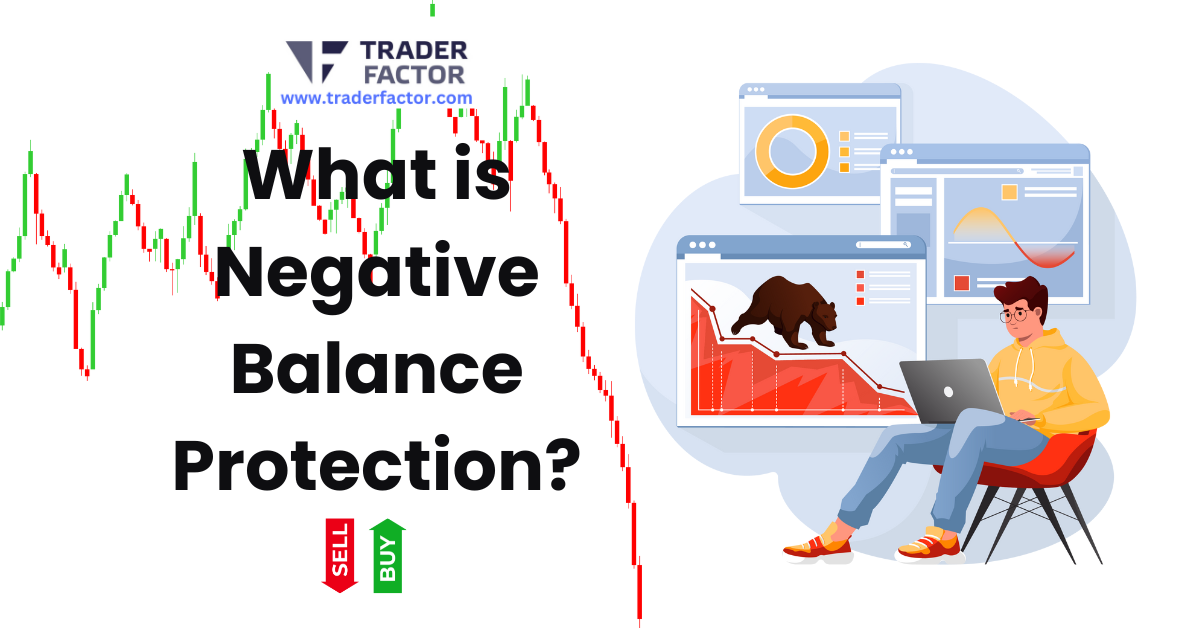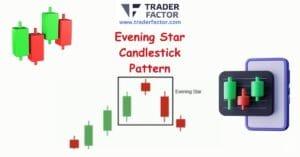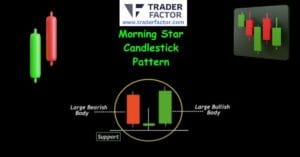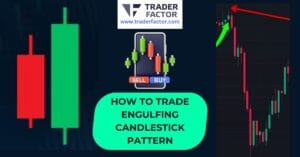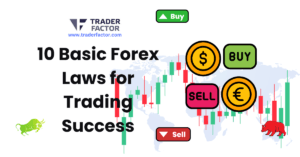Imagine navigating the stormy seas of the financial market, where sudden, dramatic market moves could potentially capsize your trading boat. That’s the place where Negative Balance Protection comes into play. It’s your life jacket, provided by your broker, ensuring you don’t drown in a sea of debt more than the amount you’ve plunged into your account. But how does this protection work? And why has it become such a pivotal part of trading regulations? Let’s navigate the whirlpools of Negative Balance Protection and discover why it’s an indispensable tool in your trading survival kit.
Table of Contents
ToggleImportance of Negative Balance Protection
Understanding the importance of negative balance protection is essential, especially if you’re dealing with leveraged products like CFDs. The significance of this safety net can’t be overstated. Imagine trading with high leverage, and the market takes a severe downturn. Without this protection, you could owe your broker more than your initial investment. That’s where the benefits of negative balance protection kick in.

This protective measure ensures that your losses never exceed the amount you have in your trading account. So, even in the worst-case scenario, you won’t be plunged into debt. It’s a safeguard that keeps your financial risk within manageable limits.
Moreover, negative balance protection is a testament to the broker’s commitment to responsible trading. It shows that they’re not just about making profits but also about protecting their clients from catastrophic losses. That’s a significant plus when choosing a broker.
Functionality of Negative Balance Protection
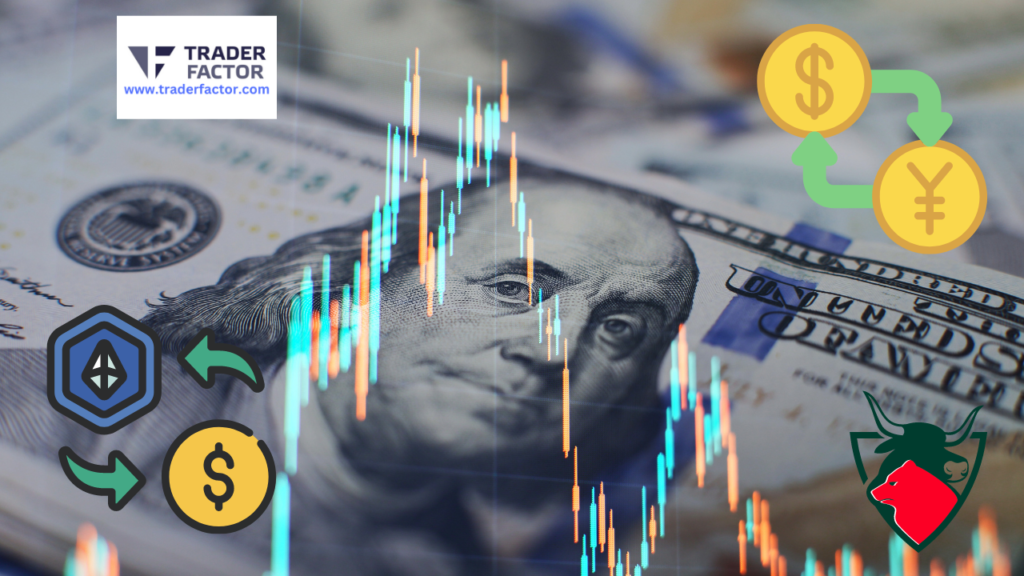
Let’s examine negative balance protection in practice. Essentially, it’s a risk management feature provided by broker services to safeguard your trading account. This protection helps ensure account stability by preventing losses that exceed your account balance, which can occur in leveraged trading scenarios.
Here are the key functions of negative balance protection:
- It serves as a guard against losses exceeding your account balance. This is particularly crucial in leveraged trading, where potential losses can be much higher than your initial deposit.
- It offers you an extra level of security by ensuring you don’t end up owing money to your broker.
- It provides a stable trading environment by eliminating the risk of a negative balance.
In the volatile world of leveraged trading, negative balance protection plays a key role in risk management. Preventing you from going into debt with your broker adds a layer of safety to your trading activities. Remember, not all brokers offer this service, so it’s always a good idea to check if your broker provides this essential protection.

Regulatory Background
To grasp the importance of negative balance protection, you need to know about the regulations that govern it. The ESMA regulations are a prime example of such rules. Established in 2018, these regulations set a new standard for investor protection, emphasizing market stability and client interests. They were introduced to prevent retail traders from losing more money than they deposit in their trading accounts.
The ESMA regulations marked significant changes in the trading industry, particularly for forex and CFDs. They included a mandatory negative balance protection per account basis for retail clients. This was a crucial step in ensuring market stability, as it prevents you from facing substantial losses that could destabilize the market.
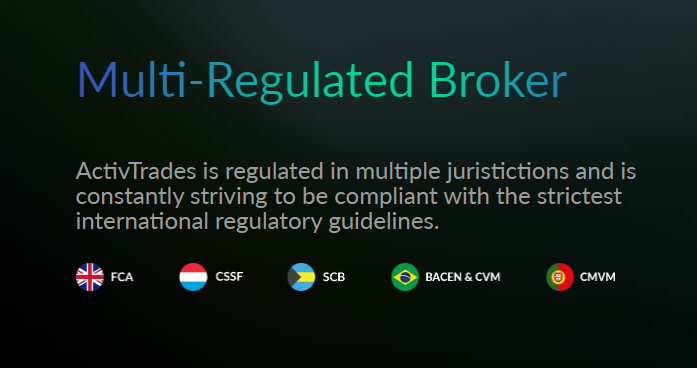
These regulatory changes reflect the ongoing efforts to align broker practices with client interests. They aim to increase transparency and trust between brokers and traders, promoting a safer trading environment. As a retail trader, the more you understand these regulations, the better equipped you’ll be to navigate the trading world and ensure that your interests are protected.
Further Learning and Considerations
Beyond negative balance protection, there’s a wealth of trading knowledge you can tap into, such as the benefits of social trading. Exploring social trading opens up opportunities to learn from other traders and gain insights from their experiences. It also fosters community engagement, allowing you to interact with like-minded individuals and discuss trading strategies, market trends, and more.
Here are some key points to consider:
- Understanding leveraged trading risks: While it can amplify your profits, it can also magnify your losses. It’s crucial to manage risks effectively.
- Staying updated with regulatory changes: Rules and regulations in the trading landscape are always changing. Ensure you know these changes to stay compliant and safeguard your interests.
- Choosing brokers wisely: Check out top broker recommendations to find a platform that suits your trading style and needs.

Negative Balance Protection for CFDs
When you’re trading Contracts for Difference (CFDs), negative balance protection plays a critical role in safeguarding your financial stability. This risk management tool ensures that your losses, even during severe market volatility, don’t exceed the funds in your account.
In leveraged trading, sharp market fluctuations can lead to significant losses, potentially pushing your account into a negative balance. This is where negative balance protection steps in. It ensures you’re not liable for debt beyond your initial investment, offering critical account protection.
Here’s a summarized understanding of the concept in a table format:
| Risk Management | Account Protection |
| Limits potential losses | Safeguards against debt |
| Essential in leveraged trading | Offers financial stability |
| Mitigates effects of market volatility | Prevents negative balance |
Understanding Negative Balance Protection
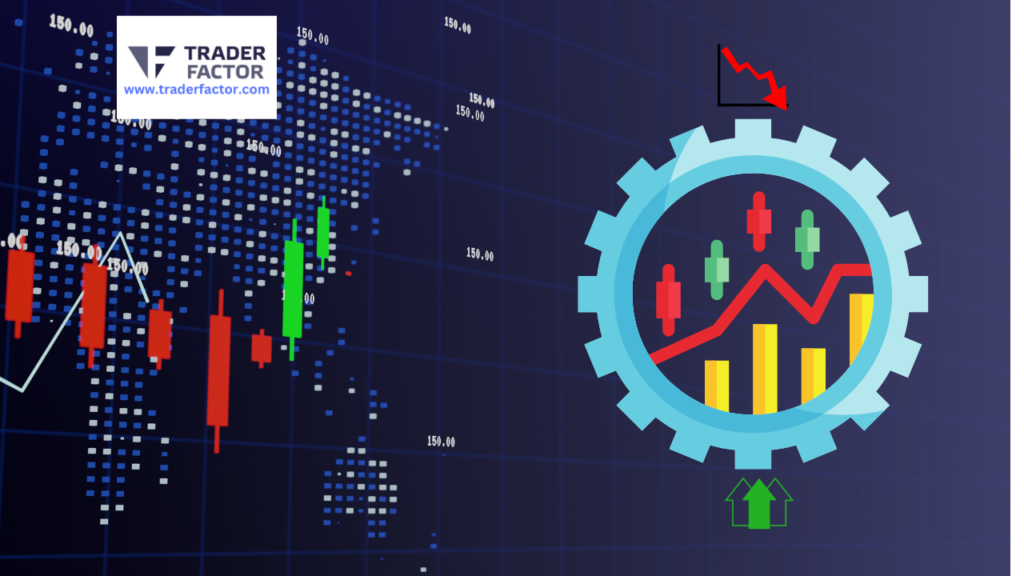
Understanding negative balance protection is crucial as it safeguards, ensuring you never owe more than what’s in your trading account. This essential element of risk management protects against the unpredictability of market volatility.
Negative balance protection is a form of account protection that prevents your account from going into debt. In the face of extreme market volatility, if your trades go south, the protection ensures that your losses never exceed your account balance, maintaining your financial stability.
To benefit from this protection, it’s important to consider:
- The client eligibility criteria. This protection is typically offered to retail clients, not professional ones.
- The financial instrument you’re trading with. Not all instruments may offer this protection.
- The geographical location. Regulations vary across regions, hence the availability of this protection.
Negative balance protection is an essential tool for traders, buffering against potential financial pitfalls. It allows traders to engage in trading with a sense of security, knowing that they won’t be plunged into debt due to unexpected market fluctuations.

Eligibility and Operation at Admirals
Now, let’s examine how this crucial safeguard operates specifically at Admirals and who is eligible for it. Admirals provide negative balance protection to their retail clients per the eligibility criteria set by regulatory bodies. This ensures your account balance doesn’t go into the red due to market volatility, thus maintaining your financial stability.
Remember, this feature is a vital part of risk management that shields you from severe losses, especially when dealing with leveraged products.
Here’s a quick look at how it works:
| Negative Balance Protection at Admirals | |
| Eligibility | All retail clients |
| Operation | Resets the account balance to zero in case of negative balance |
| Purpose | Prevents owing more than what’s in your account |
| Benefit | Ensures financial stability by capping potential losses |
However, you won’t qualify for this protection if you’re a professional trader. So, you might want to use other risk management tools, like stop-loss orders, to manage your trading risks. Stay informed, be cautious, and trade smartly.
Risk Reduction Strategies and Broker Information
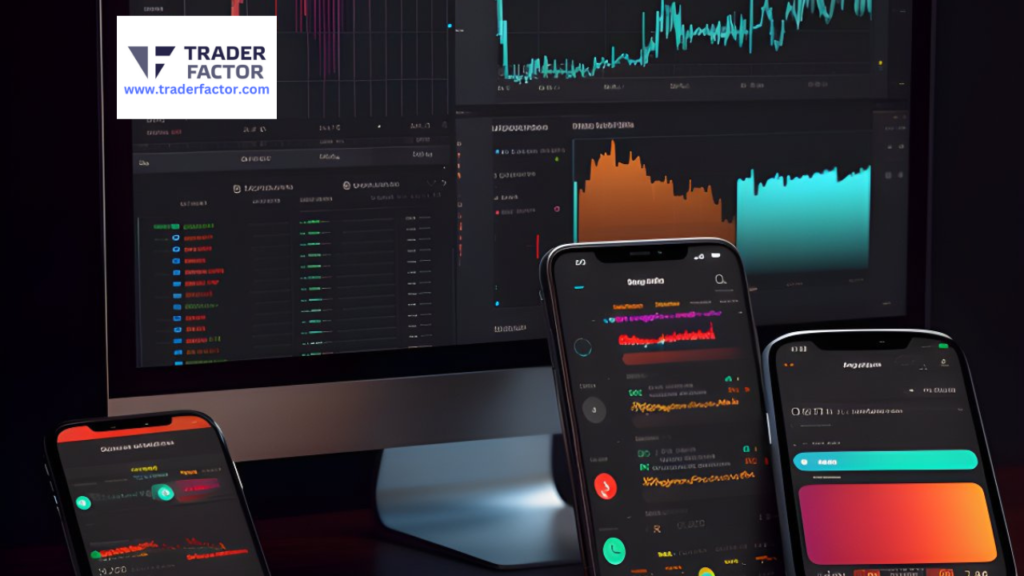
To mitigate risks while trading, it’s essential to employ strategies such as implementing stop-loss orders and adjusting position sizes, especially during periods of extreme market volatility. Stop-loss orders limit losses by automatically closing your position once it hits a certain level. Adjusting position sizes helps manage leverage risks by reducing the impact of a single trade on your overall portfolio.
Engaging with the trading community can provide valuable market insights and risk management strategies. By joining forums or social trading platforms, you can learn from experienced traders and get real-time advice.
It’s also crucial to choose your broker wisely. Broker comparison sites can help you assess fees, platform features, and, importantly, the broker’s negative balance protection policy.
Here are a few things to remember:
- Always have a risk management plan in place.
- Engage with the trading community for learning and support.
- Do a thorough research when choosing your broker.
Frequently Asked Questions
Who are the best Forex brokers that provide negative balance protection?

Here are some trusted and multiregulated forex brokers that provide negative balance protection and are suitable for all styles of trading :
OneRoyal: Known for its social trading platform, OneRoyal Forex Broker offers many educational resources and a convenient demo account for practice. The max leverage you can choose when applying for a trading account is 1:1000, and you can apply for a 100% Deposit bonus. If you have an account with OneRoyal, you can use the following trading tools: CopyTrading with Hoko Cloud, Trading Central, MT4 Accelerator, VPS Hosting, and Trading Calculators. OneRoyal is regulated by AFSL-ASIC, CySEC, VFSC, and FSA.

IronFx: This broker provides a simple platform and a risk management tool, helping you better control your trading risks. You can choose up to 1:1000 leverage for trading and get a 100% Deposit booster. As a live account owner, you can also use the Trading Tools: TradeCopier, Trading Central, AutoTrade, and VPS Hosting. IronFx is regulated by FCA, CySEC, FSCA, and BMA.

Admirals: Admirals stands out with exceptional customer support and a wide range of educational resources. You can get leverage up to 1:500, apply for VIP account conditions, and get CashBack for every trade you make. Live account holders can also use the following Trading Tools: MetaTrader Supreme Edition, StereoTrader, Trading Central, Premium Analytics, and VPS Hosting. FCA, CySEC, AFSL-ASIC, JSC, CIPC, and CMA regulate admirals.

ActivTrades: Offers a user-friendly platform, extensive educational resources, and versatile demo accounts. The highest leverage is 1:400, but only for Professional traders. For retail traders, the max leverage is set to 1:200. Traders can get CashBack and Interest on their free margin funds. With ActivTrades, you can trade with TradingView on their platform ActivTrader. ActivTrades is regulated by FCA, CSSF, CMVM, SCB, and BACEN.

EightCap: EightCap wraps it up with an intuitive platform, top-notch educational materials, and an effective customer support team. The highest leverage is 1:500, and you can get a 10% deposit bonus. With EightCap Forex Broker, you can get trading tools such as TradingView, Crypto Crusher, Capitalise AI, FlashTrader, Acuity, and VPS Hosting. EightCap is regulated by AFSL-ASIC and SCB.

What Are Some Common Misconceptions About Negative Balance Protection?
You might misunderstand negative balance protection, viewing it as a safeguard against loss. However, it doesn’t prevent losses; it stops you from owing more than your deposit, dispelling common balance protection myths.
How Do Different Brokers Handle Negative Balance Situations if They Do Not Offer Protection?
If a broker doesn’t offer negative balance protection, they typically use margin call practices, risk management strategies, and recovery actions. Regulatory intervention may occur if you cannot cover the broker’s liability.
Are There Any Potential Disadvantages or Risks Involved With Negative Balance Protection?
Negative balance protection may have downsides, such as unforeseen liabilities and hidden fees. It could also lead to risk misunderstanding, regulatory challenges, or protection limitations. Stay informed to navigate potential drawbacks effectively.
How Has the Concept of Negative Balance Protection Evolved Over the Years in the Trading Industry?
Negative balance protection has progressed historically due to regulatory changes and technological influence. It has enhanced risk management in trading, significantly impacting the industry. It is a vital tool, protecting you from devastating losses in volatile markets.
Can Negative Balance Protection Apply to Other Forms of Trading Beyond Forex and CFDs?
Yes, negative balance protection can apply beyond forex and CFDs. However, protection limitations, balance recovery, protection eligibility, regulatory implications, and trading platform policies can influence whether it’s offered for other trading forms.
Conclusion
So, there you have it. Negative Balance Protection is your safety net in the volatile world of trading. It ensures you won’t owe more than you’ve invested, thus offering peace of mind. This concept emerged from market crises, leading to protective regulations. Consider this essential tool whether you’re trading with OneRoyal, IronFx, Admirals, or ActivTrades. Combine it with risk reduction strategies, and you’re on your way to becoming a wiser trader.
Disclaimer:
All information has been prepared by TraderFactor or partners. The information does not contain a record of TraderFactor or partner’s prices or an offer of or solicitation for a transaction in any financial instrument. No representation or warranty is given as to the accuracy or completeness of this information. Any material provided does not have regard to the specific investment objective and financial situation of any person who may read it. Past performance is not a reliable indicator of future performance.

